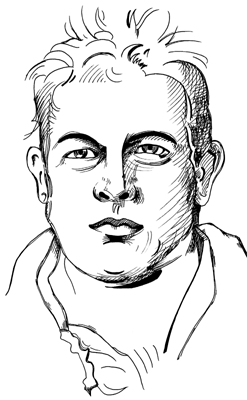 |
 |
|||
|
|
James was the son of an innkeeper from Middle Wallop. He began his career in a very humble capacity in a London warehouse. His industry, sagacity and integrity eventually secured him a partnership in the general drapery business in Fore Street of Joseph Todd, whose daughter he married. The firm latterly became known as Morrison, Dillon & Co and was afterwards converted into the Fore Street Limited Liability Company. Morrison was one of the first English traders to depend for his success on the lowest remunerative scale of profit. He thus endeavoured to secure a very rapid circulation of capital, his motto being "small profits and quick returns". He made an immense fortune, a great part of which he expended in buying land in Berkshire, Buckinghamshire, Kent, Wiltshire, Yorkshire and Islay in Argyllshire (which island he purchased for nearly £½m in 1854). In his, Life and Correspondence, Southey records how he saw him at Keswick in September 1823. He was then worth some £150,000 and was on his way to New Lanark on the Clyde with the intention of investing £5,000 in Robert Owen's philanthropic community that he had created for his factory workers, "if he should find his expectations confirmed by what he sees there". From his earliest settlement in London, Morrison was associated with the liberal party in the city. In 1830, he entered Parliament as member for St. Ives (Cambridgeshire), which he helped to partially disfranchise by voting for the Reform Bill. He did not return to his offended constituents but, in 1881, he secured a seat at Ipswich, for which he was again elected in December 1832. He was, however, defeated there on the 'Peel Dissolution' in January 1835. On an election petition, Fitzroy Kelly and Robert Adam Dundas, the members, were unseated and Morrison, with Rigby Wason, headed the poll in June 1835. At the succeeding dissolution, in July 1837, Morrison remained out of parliament and, in the following December, on the occasion of a by-election for a vacancy at Ipswich, he was defeated in a contest with Joseph Bailey. In March 1840, he re-entered the House of Commons as member for the Inverness Burghs and was again returned unopposed in the general election of 1841 but, on the dissolution of 1847, his health being much impaired, he finally retired. In the 1830s, Morrison had established the American trading company, Morrison, Cryder & Co, and invested heavily in the railway industry both in the United States and in France. On 17th May 1836, he made an able speech on moving a resolution urging the periodical revision of tolls and charges levied on railroads and other public works. In 1845, he moved similar resolutions and, again in March 1846, when he finally succeeded in obtaining a select committee for the better promoting and securing of the interests of the public in railway acts. His draft report, not altogether adopted, was drawn with great skill and many of its principles were adopted in subsequent legislation. Though an entirely self-educated man, Morrison possessed considerable literary tastes, which were exercised in the formation of a large library. He was likewise a lover of art and made a large collection of pictures of the old masters, Italian and Dutch, together with many fine examples of the English school. It was one of the most magnificent collection of the era, housed in both his London house in Harley Street as well as at Basildon Park in Berkshire which, by 1842, had completely replaced the Pavilion at Fonthill (Wiltshire) as his favoured country estate. It included works by Constable, Da Vinci, Hogarth, Holbein, Poussin, Rembrandt, Reynolds, Rubens, Titian, Turner and VanDyck. Morrison died at Basildon on 30th October 1857, possessed of property in England valued at between three and four million pounds, besides large investments in the United States. By his marriage to Mary Anne, daughter of Joseph Todd, he had, with other issue, four sons: Charles of Basildon Park and Islay; Alfred of Fonthill (Wiltshire), the father of Major James Archibald Morrison of Fonthill and Basildon; Frank of Hole Park (Kent) and Strathraich (Ross); and Walter of Malham Tarn, (Yorkshire). Edited from Sidney Lee's 'Dictionary of National Biography' (1894).
|
|||
| © Nash Ford Publishing 2007. All Rights Reserved. | ||||



 James
Morrison (1790-1857)
James
Morrison (1790-1857)